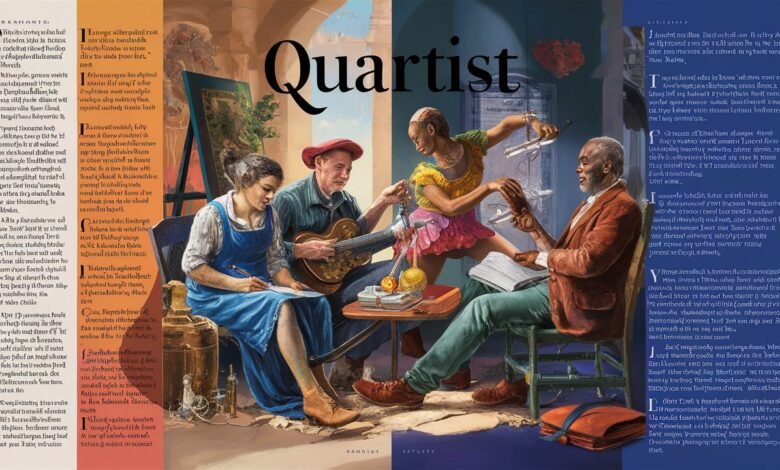Quartist: Meaning, Origins, and Applications in Modern Contexts

The term quartist is one that has intrigued researchers, linguists, and enthusiasts alike due to its unique resonance and multiple interpretations. Whether we analyze it in a historical, cultural, or contemporary setting, the word carries layers of meaning that deserve deep exploration. In this comprehensive guide, we will uncover its etymology, potential connections, relevance in different domains, and why it continues to generate interest across various disciplines.
What Does Quartist Mean?
At its core, the word quartist stems from the root “quart,” which refers to the number four or a quarter. The suffix “-ist” usually denotes a practitioner, follower, or believer in a specific idea. Combining these elements, a quartist could be defined as someone associated with fourfold divisions, quart-based systems, or principles of balance and proportion tied to four parts.
This foundational meaning allows for wide application—from mathematics and philosophy to music, literature, and even design. For instance, quartist principles may describe a person or movement that values harmony, symmetry, and proportional structure based on fours.
Historical Roots of the Term Quartist
To truly appreciate the term, it is essential to look back at its linguistic and cultural history. The use of “quart” has been evident in Latin (quartus, meaning fourth) and later extended into English, French, and Italian expressions. Throughout history, civilizations have revered the number four—representing directions (north, south, east, west), elements (earth, air, fire, water), and even human temperaments.
A quartist in historical contexts could therefore be linked with philosophies, belief systems, or artistic movements emphasizing the importance of four as a foundational principle. This symbolic association has enabled the word to remain relevant across time.
Quartist in Literature and Philosophy
The influence of quartist thinking is visible in literature and philosophy, where the concept of four has consistently shaped intellectual discussions. Writers often employ four-part structures in storytelling, dividing narratives into clear quadrants for better flow. Similarly, philosophers such as Aristotle and later medieval thinkers emphasized quadripartite frameworks when defining human existence and natural laws.
To be a quartist in literature or philosophy is to adopt a perspective that appreciates balance, division, and harmony within fourfold systems. Modern authors often still apply this method, whether consciously or subconsciously, to create more structured and engaging works.
Quartist in Music and Arts
The musical and artistic implications of quartist ideologies are profound. In music theory, a quartal harmony is one built on intervals of fourths rather than traditional thirds. Thus, a quartist musician could be described as one who applies or specializes in quartal harmony to create unique soundscapes.
In the visual arts, quartist principles appear through symmetry, geometric balance, and four-part designs. Many famous works of architecture, for example, rely on quartist concepts—structures divided into quadrants or designed around four central points of balance. This reflects not only artistic preference but also a philosophical pursuit of equilibrium.
The Quartist Movement in Modern Times
In contemporary contexts, the term quartist may also describe individuals, movements, or organizations that embrace four-part systems for structuring knowledge, governance, or creativity. For example:
-
Education: Quartist teaching models emphasize four pillars of learning—knowledge, application, critical thinking, and creativity.
-
Business: Many strategic frameworks divide progress into four quarters, aligning directly with quartist ideologies.
-
Design: Modern design trends incorporate quartist principles in creating balanced user interfaces, often split into four essential sections.
By adopting such systems, modern quartists continue a long tradition of valuing proportional order, symmetry, and the guiding power of four.

Quartist in Science and Mathematics
In mathematics, the quartist approach is tied to quartiles, a statistical method of dividing data into four equal parts. Analysts and statisticians who heavily rely on quartiles for data interpretation could be considered quartists in their field.
In physics and natural sciences, quartist perspectives can be applied to models that emphasize fourfold categories, such as:
-
The four fundamental forces of nature (gravity, electromagnetism, strong, and weak nuclear forces).
-
The four states of matter (solid, liquid, gas, plasma).
-
The four nucleotides of DNA (adenine, thymine, guanine, cytosine).
Thus, a quartist worldview aligns strongly with how modern science categorizes and interprets natural phenomena.
Cultural Symbolism of Quartist Beliefs
Culture and symbolism are inseparable from quartist ideology. Across ancient and modern societies, the number four represents wholeness, stability, and structure. From the Native American medicine wheel to Chinese philosophy’s four symbols, the number has been celebrated as a universal framework of existence.
Why Quartist Principles Remain Relevant Today
In a rapidly changing world, the enduring influence of quartist thinking demonstrates the timeless relevance of balance and proportion. Whether in science, design, philosophy, or culture, the idea of structuring knowledge and systems into four parts continues to provide clarity and order.
As organizations, thinkers, and creators search for methods to improve efficiency, creativity, and understanding, quartist frameworks offer a stable foundation that connects past traditions with future innovation.
Frequently Asked Questions About Quartist
Q1: Is “quartist” a modern term or an ancient concept?
A quartist is rooted in ancient symbolism of the number four but has been adapted in modern contexts such as science, design, and music.
Q2: Can someone call themselves a quartist today?
Yes, individuals who practice or advocate for fourfold structures, systems, or artistic methods can identify with the term quartist.
Q3: How does quartist thinking benefit daily life?
Quartist thinking promotes balance, structure, and harmony, making it useful in organization, learning, planning, and creativity.
Q4: Is quartist only linked with art and philosophy?
No, it extends to mathematics, business, science, culture, and even personal development, showing its broad application.
Q5: Why is the number four so important in quartist ideologies?
The number four symbolizes stability, order, and universality, making it a natural foundation for quartist principles.
Conclusion
The concept of quartist stretches far beyond a single definition. It encompasses a philosophy that has shaped history, arts, sciences, and modern systems of thought. Rooted in the power and symbolism of the number four, quartist principles continue to offer structure, balance, and clarity in an increasingly complex world. By understanding quartist ideologies and applying them in practical contexts, we connect with a timeless tradition that blends cultural heritage with modern innovation.


